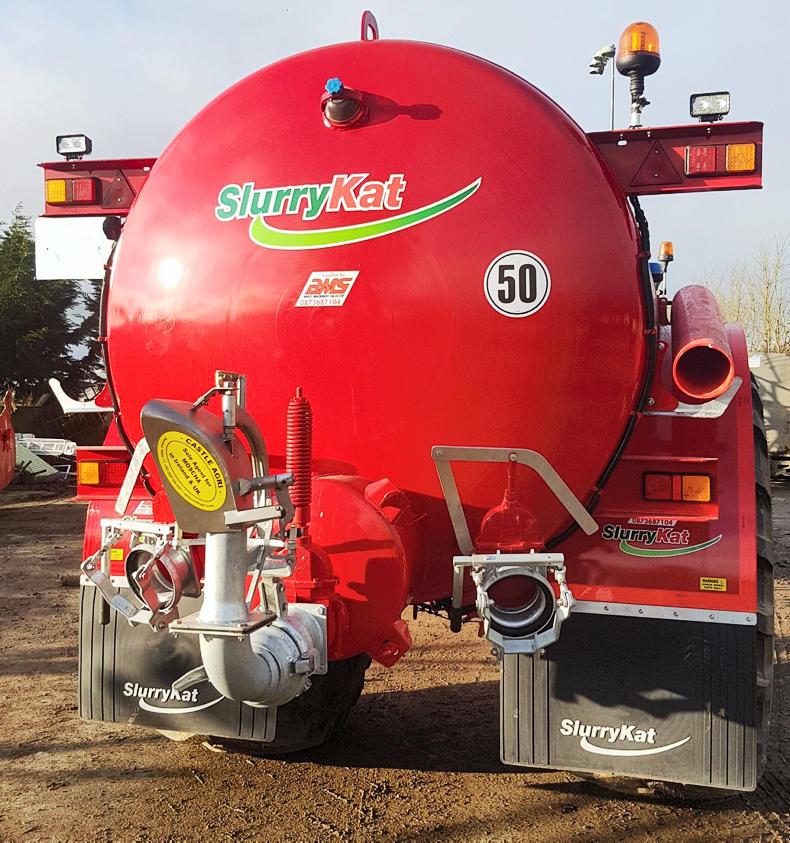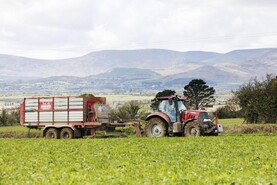The Moscha swivel spreading system has been available in Ireland since 2014. It is becoming a more common sight, with 280 units sold in 2017.
The original system works on the principle that the flow of slurry flicks the spout from side to side but the ingenious inner diverter plate means that as the spout gets to either side of the arc, the flow of slurry also cushions the change of direction.
One of the main advantages of the Moscha is the fact that the slurry is leaving the spreader at a far lower velocity than from a splash plate system. This allows the slurry to form large droplets rather than a spray pattern.
These large droplets are claimed to have numerous advantages ranging from smell reduction and better utilisation of the nitrogen in the slurry to reducing the chances of water pollution in comparison to both splash plate and trailing shoe systems.
A spread width of 18m can be reached with a single spreader unit. Castle Agri imports the Moscha spreader to Ireland. Dermot Tobin of Castle Agri has had lots of interest in wider spreading widths so as to match up to the more common tillage tramline widths.
Twin spreader
Dermot hopes to have the latest offering from Moscha, a folding twin spreader, in Ireland early this year for testing. This new machine will spread at least 24m. This will allow slurry to be spread evenly over 24m tramlines in a growing cereal crop.
There are many advantages to the Moscha, according to Dermot. Reduced air pollution is the first one that I noticed, with the reduction in smell and the larger droplets leaving less surface area for pollutants to enter the air during flight.
Once on the ground, the pattern of the spread which had been checked using a tray test shows that the spread is perfectly even over the full spread width. The spread can get up to a very impressive 18m with a single spout and up to 24m with the new variant.
This even spreading means that no area of the ground becomes saturated with slurry, allowing both better uptake of the nutrient into the plant but also reducing the chances of water contamination as all the nutrients are being used.
This differs from all other spreading methods as none of them can spread as evenly as the swivel spout, according to Dermot.
The power requirement for one of these systems is much lower than for a trailing shoe system. This has a twofold advantage – firstly, that the cost of the tractor is much less and also the weight of the tractor is far less, meaning that there is far less compaction.
The width of the spread from the Moscha also means that less trips are required to cover the ground with a smaller tractor.
Operators of the system claim that their output had improved dramatically since they fitted the swivel spout. This was due to many different reasons, including the spread width and also the ability of the Moscha to spread any slurry that you can spread with a splash plate but with a reduction in blockages of between 30% and 40%.
In the unlikely event of a blockage, Moscha has introduced a new blockage release system which allows the blockage to be removed more quickly than previously.
The wider spreading width along with this blockage removal system make the Moscha swivel spout a versatile and cost-efficient way of spreading slurry across different agricultural sectors.






 This is a subscriber-only article
This is a subscriber-only article











SHARING OPTIONS: